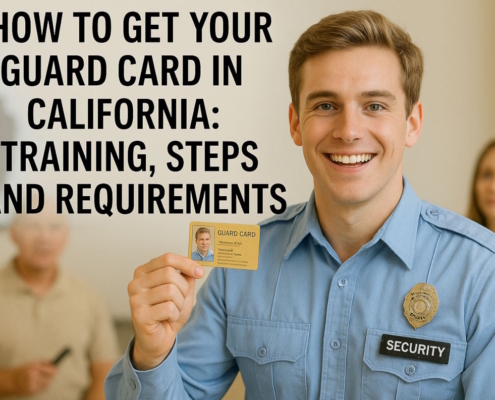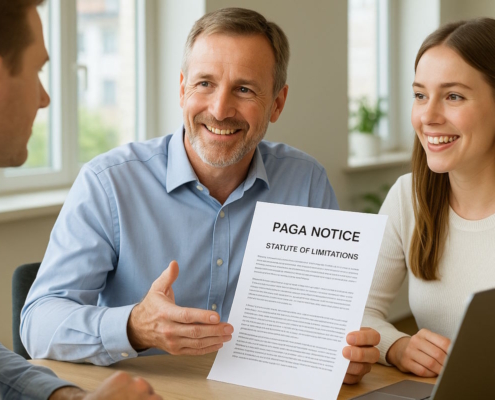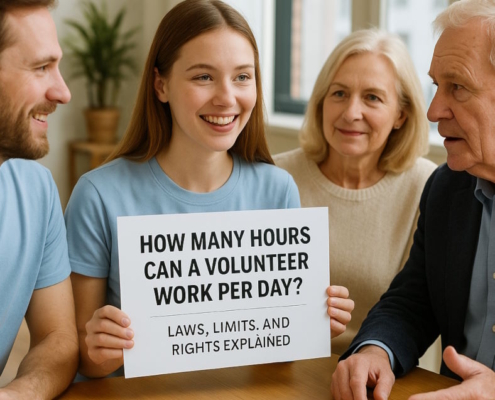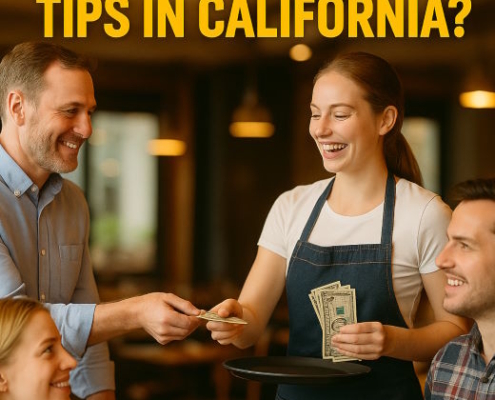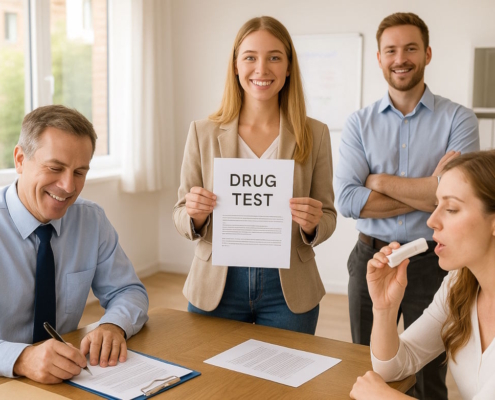Average PAGA Settlement and Verdict
By Douglas Wade, Attorney
Email | Call (800) 484-4610
Get Smarter. Search FAQs.
PAGA Claim
The average PAGA settlement or judgement is truly an inaccurate method of determining the settlement value of a PAGA claim; this is demonstrated below with specific cases and PAGA settlement or verdict. The reason is the PAGA claim is based on arithmetic and the size of aggrieved employees. In PAGA, the Legislature created an enforcement mechanism for aggrieved employees to file representative actions to recover penalties in cases in which there is no private cause of action as an alternative to enforcement by the Labor Commissioner.
An employee plaintiff suing, as here, under the PAGA, does so as the proxy or agent of the state’s labor law enforcement agencies. The act’s declared purpose is to supplement enforcement actions by public agencies, which lack adequate resources to bring all such actions themselves.
In a lawsuit brought under the act, the employee plaintiff represents the same legal right and interest as state labor law enforcement agencies—namely, recovery of civil penalties that otherwise would have been assessed and collected by the Labor Workforce Development Agency.
Gwin v. Natvan, Inc. $110,000 Judgment
2019 Cal. App. Unpub. LEXIS 6629
Following the tentative verdicts, and a mandatory settlement conference, the parties reached a settlement agreement in February 2018. The settlement agreement encompassed both Gwin’s claims and those of another former Natvan employee named Amber Donnell, who separately had filed suit.
The settlement agreement included a recitation of the matter’s procedural history, including the tentative verdicts. Gwin and the defendants agreed to a stipulated money judgment of $110,000 in Gwin’s favor (not including PAGA penalties). This included $51,250 in economic damages (comprised of the amounts in the tentative verdict for unpaid overtime and vacation, and slightly larger amount for meal and rest breaks than set forth in the tentative verdicts), $9,500 in non-economic damages and $3,250 in statutory penalties (an amount greater than the tentative verdicts), $6,000 in punitive damages (the same amount in the tentative verdicts, which imposed $3,000 in punitive damages against Natvan and the same amount against Gi), and an unallocated $40,000 “settlement compromise payment.” [*8]
Paprock v. First Transit, Inc. $11.5 Million Judgment
(May 18, 2015, No. D064697) ___Cal.App.5th___ [2015 Cal. App. Unpub. LEXIS 3430].)
By separate written order filed September 13, the court approved the parties’ written settlement agreement, [*10] class counsel and the claims administrator; redefined the settlement class consistent with the terms of the agreement; authorized payment of attorney fees, costs, incentive awards and claims administration compensation; and entered a final judgment under which the court retained jurisdiction for purposes of effectuating the settlement (Judgment).
The Judgment effected the settlement, which required First Transit to pay up to $11.5 million — with up to approximately $6.89 million potentially going to the employee class members.
Alonzo v. First Transit, Inc. $10,000 Settlement
2018 Cal. App. Unpub. LEXIS 7198
The parties conducted discovery and reached a settlement in February 2013 following two days of mediation. In June 2013 the trial court preliminarily approved a settlement pursuant to which First Transit agreed to pay up to $2 million to settle the class claims. As part of the settlement, the plaintiffs agreed to file a third amended complaint that added claims for civil penalties under PAGA, and First Transit agreed to pay $10,000 of the settlement amount to the Labor and Workforce Development Agency (LWDA) to resolve the PAGA claims. The settlement agreement did not distribute to the aggrieved employees any of the $10,000 allocated to the PAGA claims.
Amaral v. Cintas Corp. $258,9000
163 Cal. App. 4th 1157
Nor has Cintas shown the penalty award is unjust, arbitrary and oppressive, or confiscatory. Cintas claims the imposition of $258,900 in penalties is unjust, arbitrary and oppressive because the LWO is ambiguous [***108] and it was unclear whether or to what extent it applied to the work plaintiffs performed. However, several facts support the trial court’s decision to impose full penalties. Based on undisputed facts, the court found Cintas was on notice that the LWO applied to its operations but made no attempt to comply with the ordinance. Although the court stopped short of finding the company’s Labor Code violations to be “willful,” the court chastised Cintas’s “cavalier approach to fulfilling its contractual and statutory obligations” and suggested its conduct could be characterized as gross negligence or reckless disregard. Cintas also argues the penalties were unfairly inflated because it pays employees on a weekly basis. Under the court’s interpretation of former sections 210 and 225.5 that penalties are to be assessed per pay period, Cintas complains its penalties were arbitrarily higher than they would have been if it had paid its employees less often. The frequency of an employer’s [**618] pay periods can cut both ways, of course, since employees who are paid on a monthly basis will recover lower penalties than employees who receive paychecks more frequently. However, we must presume the trial court considered [***109] this argument and determined it did not warrant a reduction of Cintas’s penalties. This conclusion was well within the court’s discretion.
Finally, the $ 258,900 penalty assessment is not confiscatory. The court received evidence that Cintas’s parent company had $ 2.81 billion in sales and $ 272 million in profits during fiscal year 2004. The penalty award is certainly not “astronomical” in comparison. (See, e.g., City and County of San Francisco v. Sainez (2000) 77 Cal.App.4th 1302, 1318–1319 [92 Cal. Rptr. 2d 418] [approving $ 663,000 penalty for housing code violations, which represented about 28.4 percent of the defendants’ net worth].) The penalty award, which [***110] totaled less than one-third of the plaintiffs’ $ 804,783 damage award, was also proportional to Cintas’s misconduct. (See Kinney v. Vaccari (1980) 27 Cal.3d 348, 356 [165 Cal. Rptr. 787, 612 P.2d 877] [punitive assessment should be proportional to defendant’s misconduct, sufficient to achieve penalty’s deterrent purpose, and not constitutionally excessive].)
In sum, the trial court did not abuse its discretion in declining to reduce the PAGA penalties pursuant to section 2699, subdivision (e)(2).
Gwin v. Natvan, Inc. $60,000 Settlement
2019 Cal. App. Unpub. LEXIS 6629
The parties also agreed to a stipulated money judgment of $60,000 in PAGA penalties “for Labor Code violations committed by Natvan” applicable to both the Gwin and Donnell lawsuits. The agreement included a formula by which Gwin and Donnell would participate in the PAGA penalties. The parties also executed a guaranty whereby Gi and his spouse agreed to guarantee and pay “all amounts included in the judgment” entered in connection with the settlement agreement, and that Gwin would have recourse to both the marital community property as well as the separate property of the guarantors.
Britto v. Zep Inc. $275,000
2015 Cal. App. Unpub. LEXIS 6855
In January 2013, while the claims in this case were pursued by Britto and Cowan individually, Plaintiffs made a settlement demand of $1,007,331.08 ($910,500 of which was for PAGA penalties), excluding fees and costs.
In February 2013, Zep filed a motion for summary judgment or summary adjudication against Britto, in part on the ground that Britto had filed for bankruptcy without disclosing the claims he had against Zep.
While the summary judgment motion was pending, Zep made a settlement offer to Britto and Cowan pursuant to Code of Civil Procedure section 998 with respect to their individual claims and PAGA penalties. Plaintiffs accepted the offer on July 9, 2013.
By the terms of the offer of compromise, (1) Britto would receive $26,000, plus interest, costs, and attorney fees in an amount to be determined [*7] by the court “in accordance with law”; (2) Cowan would receive $22,000, plus interest, costs, and attorney fees in an amount to be determined by the court “in accordance with law”; (3) civil penalties would be paid to the California Labor and Workforce Development Agency (LWDA) pursuant to PAGA in the amount of $275,000, plus costs and attorney fees to be determined by the court “in accordance with law”; and (4) dismissal would become effective after the court approved the amount and allocation of PAGA penalties.
****
In addition, Zep argues, the $275,000 in PAGA penalties was a fraction of the $1.7 million Plaintiffs initially sought. However, the question is not whether Plaintiffs settled for less than they originally wanted, but whether they recovered an amount of significance. It is reasonable to conclude they did.
Hawkins v. City of L.A. $20,000
2019 Cal. App. Unpub. LEXIS 5989
The jury found for plaintiffs on their Bane Act and whistleblower causes of action but against them on their federal civil rights claims. The jury also found against Hawkins on his FEHA cause of action. As to the Bane Act cause of action, the jury found that the City engaged in conduct that interfered or attempted to interfere by threats, intimidation, or coercion with plaintiffs’ right to complain about a supervisor engaging in conduct inconsistent with the Vehicle Code. As to the section 1102.5 cause of action for retaliation, the jury found that plaintiffs’ disclosure that a supervisor pressured hearing examiners to change decisions [*11] was a contributing factor to the City’s decision to fire plaintiffs. The City, however, did not prove it would have fired plaintiffs for legitimate, independent reasons even if they had not complained. The jury awarded Hawkins $238,531 and Kim $188,631 in damages, respectively.
The trial court assessed a $20,000 penalty under PAGA and awarded plaintiffs $1,054,286.88 in attorney fees.
Kaanaana v. Barrett Business Services, Inc. $53,293.50
29 Cal. App. 5th 778
The evidence established that employees lost three to five minutes of a 30-minute break. The court awarded $227,190.73 “for the 22,220 instances in which the unrounded time records reflect breaks of less than 30 minutes.”
“[F]or the employees who lost three to five minutes of a 30 minute break, they are not entitled to recover minimum wages for all or any portion of the meal period. [***8] Their exclusive remedy is a meal period premium under Labor Code section 226.7.”
No waiting time penalties applied, because no minimum wages were owed for the shortened meal periods “and the meal period premiums that are owing for the shortened meal periods are not a wage that could trigger waiting time penalties.”8Link to the text of the note
The court awarded the class $53,293.50 in civil penalties under PAGA. Plaintiffs sought civil penalties under section 558 for noncompliant meal periods totaling $409,950, but the court exercised its discretion to reduce the penalties to 13 percent of the full amount. (On average, plaintiffs were deprived of 13 percent of the 30-minute meal period.) The court found the full penalty would be “unjust, arbitrary and oppressive, or confiscatory” under section 2699, subdivision (e)(2). No civil penalties were owing under section 1197.1 for unpaid minimum wages.
Julie Gunther v Alaska Airlines $25,000,000
Superior Court Case No. 37-2017-00037849-CU-OE-NC
For the foregoing reasons, the Court enters judgment for Plaintiff. The Court awards the following monetary awards:
- penalties to Plaintiff under Labor Code § 226(e) in the amount of $4,000.00
- PAGA penalties (of which 75% shall be awarded to the State of California and 25% shall be awarded to the aggrieved-employees) in the amount of $25,010,158.00
Defendant is hereby ORDERED:
- to submit to the Court a proposed method for distribution of the applicable penalties to the aggrieved-employees by October 11,2019, and
- to comply with the equitable relief ordered herein.
Have a quick question? We answered nearly 2000 FAQs.
See all blogs: Business | Corporate | Employment
Most recent blogs:






